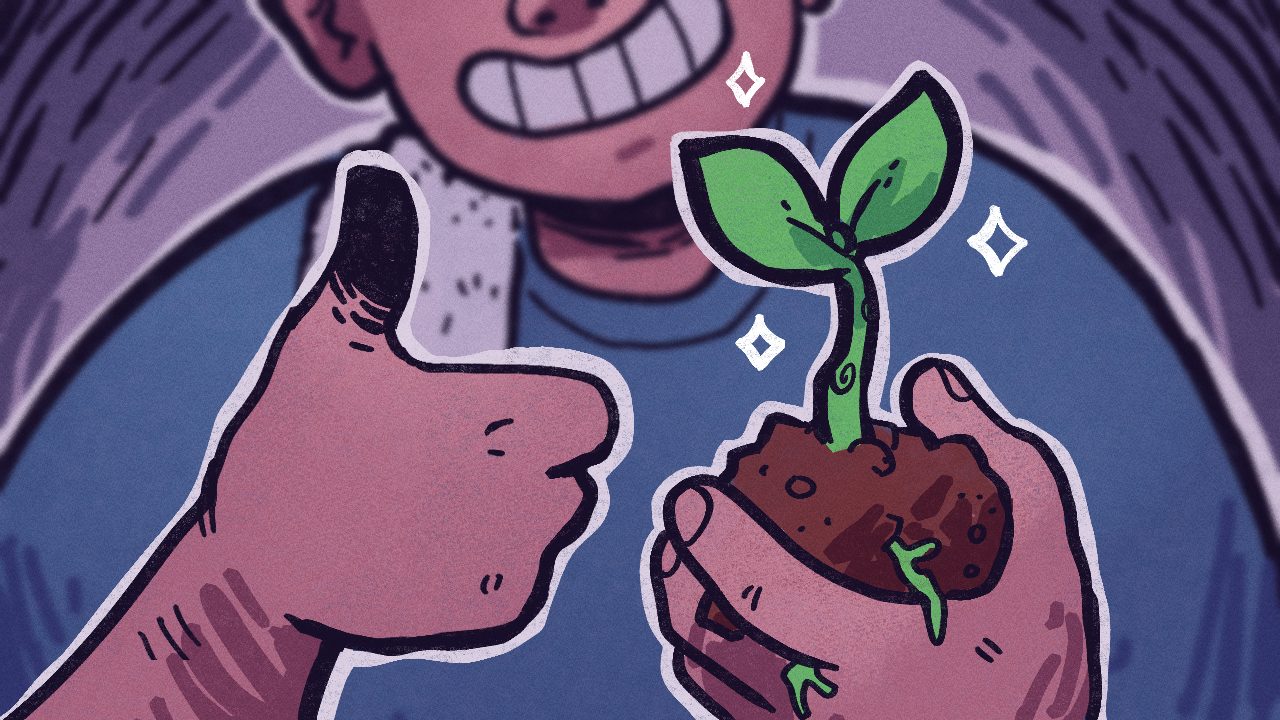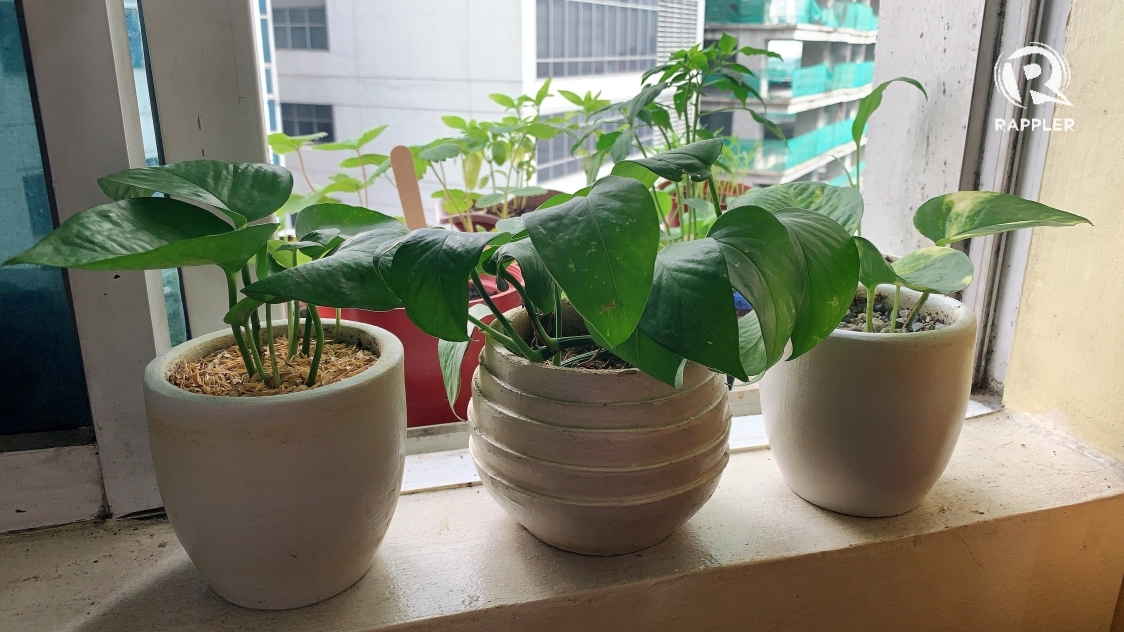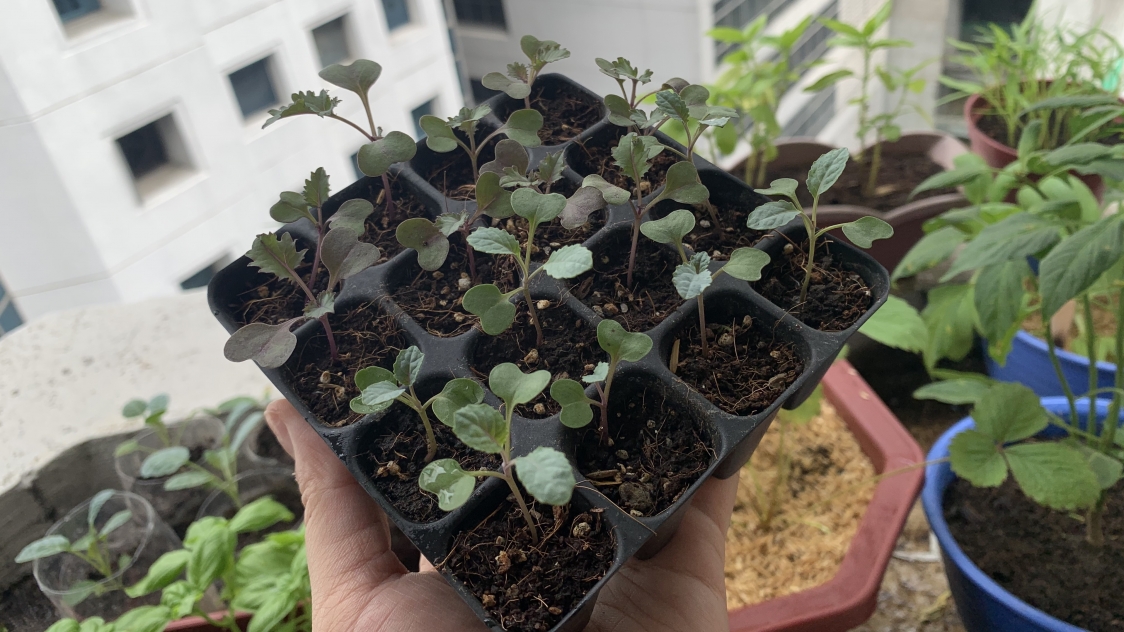SUMMARY
This is AI generated summarization, which may have errors. For context, always refer to the full article.

There was once a time when I’d kill, for no clear reason, any plant I’d touch.
Three years and a pandemic later, my black thumb has inexplicably turned into… a shade approximating green.
Like most people in your online and real-life social circles, I’ve devoted a considerable chunk of life under quarantine tending to, propagating, and (still, occasionally, albeit symbolically) crying over failed projects.
With the necessary disclaimer that I am no expert (nor will I ever likely become one), here are a few things you’ll want to keep in mind if you’re thinking about diving head-first into the world of plant care.
Know what you want to grow
Are you in it for food production? Do you prefer taking care of inedible (often, poisonous) but beautiful plants? Do you want a mix of both? Figuring out what it is you’d like to grow makes it easier to choose what it is you actually want to buy and grow.
Like most things in life, easy wins early on are key to building confidence and, eventually, the gall to care for trickier plants.
Basil, at least to my mind, is an edible plant that’s easy to start from seeds or to care for as a tiny plant. As long as you give it enough sunlight and resist the temptation to overwater, it’ll survive and even thrive. Ironically, I’ve found more luck in starting basil from scratch rather than buying it as a starter plant.

Tomatoes are also a fun beginner experiment, although you’ll have to be careful about which variety you pick since some aren’t as resistant to blight. Let me tell you: it’s strangely heartbreaking to have to discard a plant that’s succumbed to blight just as it’s about to flower. Yes, it still stings.
An insanely easy win would be kangkong or pechay (bok choy if you’re feeling fancy). It takes a little over a month for kangkong to be ready for harvest after planting from seed. Pechay or bok choy are the same, although you will need just a little more space so they grow faster and denser. The same goes for plants like kale or lettuce – with the caveat that these might not thrive as much if it’s too hot out.
If ornamental plants are more your thing, the most obvious choice are succulents – most thrive on neglect. Easy win ornamentals also include the oh-so-resilient snake plant and ZZ plant. My personal favorite (and current obsession) are pothos plants – most varieties aren’t finicky at all and require minimal maintenance.

Oh, the things you’ll learn along the way
It goes without saying that research is key to success. But I’ve found that “listening” to your plants is also key. Before I get ahead of myself, the basics: read up on what your plant requires. Does it thrive with direct sunlight? Does it prefer indirect sun? Is it a natural ground cover plant and, therefore, requires lowlight as an indoor plant?
Do they do better with humidity? Do they retain water? Check reputable websites as your reference, or ask friends who have more experience when it comes to gardening.
More importantly, you have to learn to read cues from the plant itself.
A potted aloe vera plant was on the verge of death because I followed the usual instructions to a tee and watered infrequently. For some reason, my weird aloe vera plant prefers near-daily watering. Now it’s thriving, and I have no real explanation why.
Also be mindful of the space you’re growing your plants in, whether they be in pots inside or outside your home or in-ground in raised beds, or outdoors. Take note of the weather – if it’s chilly and rainy, I skip watering my potted edibles. When it’s hot out, I water at least once a day and check the leaves for any signs of heat stress.
So hit the books (or legitimate websites), but also understand that they’re living things that might react to their environments in unique ways.
The supplies you’ll need
If you’re starting plants from seed, you’ll obviously need soil and planters. They’re pricey, but you really can’t go wrong with soil-less potting mix, especially if you’re planting seeds. If your budget allows, potting mixes made specifically for seed starting are the best option, but I’ve been able to grow seeds using potting mixes augmented with vermicast.
Planters can be anything that’s enough to accommodate your plant and has good drainage. While I’ve amassed an embarrassingly huge collection of plastic planters for most of my edible plant experiments, I’ve also had huge luck growing inside recycled soy milk bottles, ice cream pints, and cut up plastic water bottles. Just make sure they drain well and that they’re the right size, meaning the planter should be able to accommodate the kind of root system your plant has.

Speaking of replanting and repotting – before you do, make sure to check how your plant likes to be planted. For instance, strawberry plants shouldn’t be buried too deep into the soil – the crown should be well above the soil. Tomatoes, meanwhile, can be planted a little deeper into the ground since seedling stems can grow roots.
Depending on just how many you’ll eventually grow, it’s useful to have the following supplies on hand – sprayers to mist plain water or apply treatments with, shears or scissors to trim plants with, and a trovel if you want (an old spoon or your hands work just as well, honestly).
Later on, and depending on your growing conditions, you might want to buy fertilizer and pesticide. Since a bulk of the plants I’m growing are edible, I prefer using organic options – that is, processed rabbit manure and kelp extract as fertilizer and neem oil as a pesticide.
Dive right in!
In trying to understand how to grow plants better, I’ve fallen into the bottomless pit that is plant YouTube videos.
So far, Laura LeBoutillier of Garden Answer and Kevin Espiritu of Epic Gardening are two reliables – with the caveat that they’re based in the US, so their planting conditions and seasons are obviously different from ours. Amanda Switzer of Planterina fame is another favorite because of her deep-dives into her huge collection of indoor plants.

In the Philippines, Glo de Castro or Urban Gardening Mom and Garden to Kitchen (a YouTuber and gardener based in Leyte) are favorites because they explain things succinctly and clearly. I’m both proud and embarrassed to admit that I can spend hours listening to their videos and reading up on their written work.

As entertaining and informative as gardeners on YouTube can be, it still doesn’t hurt to ask friends and family for advice on growing plants. Again, the peculiarities of growing in specific conditions add to the wealth of knowledge you’re already building on.
Buying tips and other tricks
The internet marketplace can be insane. Unless you’ve sworn off social media, it’s likely you’ve seen plants sell for as high as 6 figures online. Even more insane? The fact that these plants sell fast.
Of course, these are the rarer varieties that require years of care before they become as lush as they are upon selling. If you’re into these rare plants and if you can afford them, why not? (Although I personally still think 6 digits for a plant is insane).
But even not-so-rare plants can cost an arm and leg, especially since the hype is strong and the demand is high. The cheapest option is to visit plant hubs – Farmer’s Market in Cubao, Quezon City, and the Quezon Memorial Circle, also in Quezon City – are obvious choices. If you have the means, a trip to Bulacan or Tagaytay might be your best bet, especially if you’re buying in bulk. These suggestions, of course, assume it’s safe to travel outside or that, at the very least, you take enough safety precautions in your shopping excursion.
I suppose this is where the convenience of buying plants online comes in. The premium price means you’re able to grow your plant collection while staying safely at home. More often than not, plants that sell at a premium price have already been acclimated to the pots they’re in and, most likely, come in especially pretty pots. If I’ve mentioned the word pot too many times, that should also clue you into why they’re so pricey; especially if the plant isn’t a particularly rare one, it’s likely that you’re paying mostly for the pot and not the plant itself.
When buying online – especially if you’re buying plants that are still in their nursery pots – take the time to check what the plant looks like. Is it the right size for the space you intend to put it in? Do its leaves look stressed? Are there obvious signs of infestation?
Personally, I’ve turned to Facebook Marketplace, Facebook Groups, and my personal network when I buy plants. I also prefer sellers who have the patience to explain plant care, maintenance, and condition before I make a purchase.
While I’d love to downplay rarer plants, they are, for better or worse, truly a wonder to behold. As I write this, I’m trying my darnest to resist buying White Christmas caladiums. Thankfully, I have neither the patience nor space to care for a monstera plant, but those are almost always expensive, thanks mostly to the amount of time it takes to grow them. There’s a tiny baby monstera plant at home and after over two months, it’s sprouted a total of one tiny leaf.
Here are some online resources I’ve become the suki of in the past few months:
Plant care or being a plantito or plantita can be a wonderful way to pass time, learn patience, and even grow your own food. Perhaps, by virtue of all the time we’re suddenly forced to spend at home, the demands of plant parenthood have turned into a welcome escape.
And while I harp on about easy wins, you shouldn’t let both easy and hard losses take away from the fun of gardening. Losing a plant (or two, or all) stings, yes. But don’t take things too seriously! Think of it as a chance to learn (take mental or actual notes!) and forge on ahead and try again with the same or a different plant. – Rappler.com

Add a comment
How does this make you feel?
There are no comments yet. Add your comment to start the conversation.